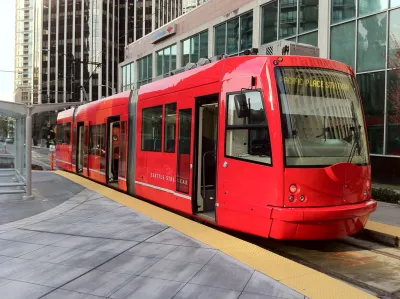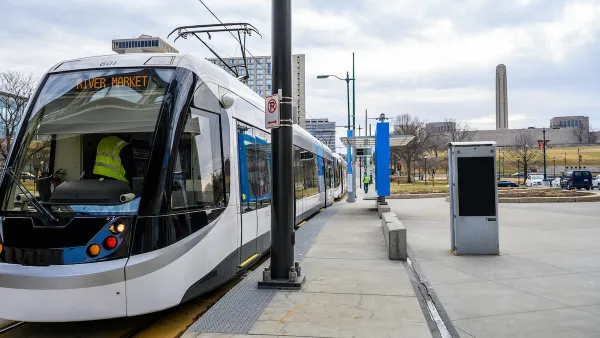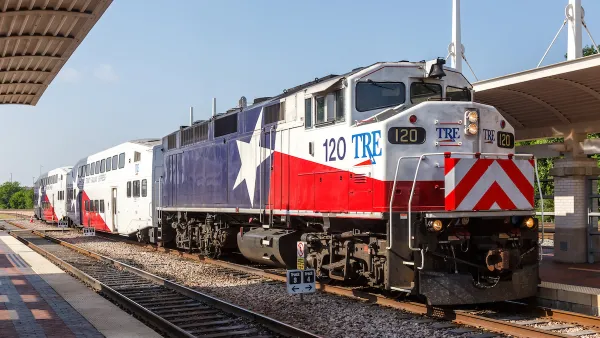While they're currently in vogue, streetcars are only worthwhile if they can be a viable option for local residents. Unfortunately, this is rarely how the systems are designed.

Streetcars, once a common feature in American cities, are on their way back. "The recent efforts of cities across the United States to build streetcar lines running through their downtowns have been heralded by some as an ideal amalgam—an investment in improved transportation that also leads to adjacent private development."
In a piece for Urban Land Magazine, Yonah Freemark criticizes existing streetcar systems for appealing to tourists rather than local residents. According to Freemark, there is no clear indication that installing sluggish streetcars actually drives economic growth.
From the article: "The focus on streetcars is reminiscent of the economic development strategies urban planners previously used in attempting to spruce up their downtowns, like pedestrian malls in the 1960s, festival marketplaces in the 1970s, and convention centers in the 1980s, none of which was particularly successful in reviving any downtown."
Freemark argues that a good streetcar system serves local needs, and does not serve as a downtown take on the Disneyland monorail. "The biggest problem is that they are typically too slow to be useful for most people [...] In the illustrative case of the recently opened Atlanta Streetcar, these conditions mean that the vehicles roll down the street at a measly six miles per hour (9.7 kmph). And that's once passengers have made it on board."
FULL STORY: Transportation First, then Economic Development for Streetcars

National Parks Layoffs Will Cause Communities to Lose Billions
Thousands of essential park workers were laid off this week, just before the busy spring break season.

Retro-silient?: America’s First “Eco-burb,” The Woodlands Turns 50
A master-planned community north of Houston offers lessons on green infrastructure and resilient design, but falls short of its founder’s lofty affordability and walkability goals.

Delivering for America Plan Will Downgrade Mail Service in at Least 49.5 Percent of Zip Codes
Republican and Democrat lawmakers criticize the plan for its disproportionate negative impact on rural communities.

Test News Post 1
This is a summary

Test News Headline 46
Test for the image on the front page.

Balancing Bombs and Butterflies: How the National Guard Protects a Rare Species
The National Guard at Fort Indiantown Gap uses GIS technology and land management strategies to balance military training with conservation efforts, ensuring the survival of the rare eastern regal fritillary butterfly.
Urban Design for Planners 1: Software Tools
This six-course series explores essential urban design concepts using open source software and equips planners with the tools they need to participate fully in the urban design process.
Planning for Universal Design
Learn the tools for implementing Universal Design in planning regulations.
EMC Planning Group, Inc.
Planetizen
Planetizen
Mpact (formerly Rail~Volution)
Great Falls Development Authority, Inc.
HUDs Office of Policy Development and Research
NYU Wagner Graduate School of Public Service




























